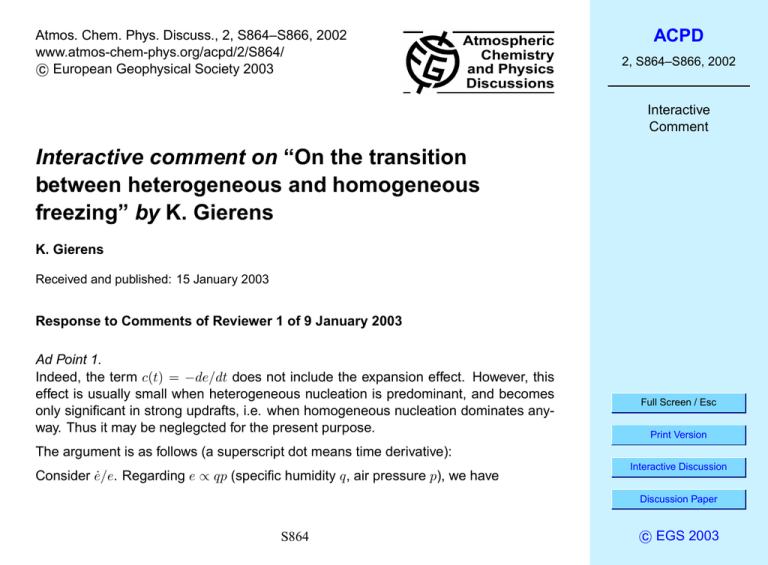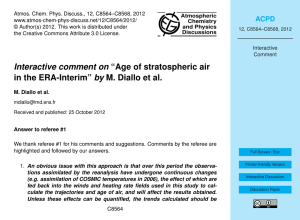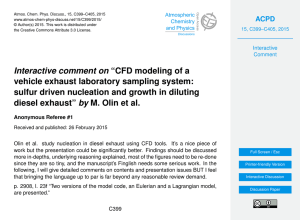AC S864
advertisement

Atmos. Chem. Phys. Discuss., 2, S864–S866, 2002 www.atmos-chem-phys.org/acpd/2/S864/ c European Geophysical Society 2003 Atmospheric Chemistry and Physics Discussions ACPD 2, S864–S866, 2002 Interactive Comment Interactive comment on “On the transition between heterogeneous and homogeneous freezing” by K. Gierens K. Gierens Received and published: 15 January 2003 Response to Comments of Reviewer 1 of 9 January 2003 Ad Point 1. Indeed, the term c(t) = −de/dt does not include the expansion effect. However, this effect is usually small when heterogeneous nucleation is predominant, and becomes only significant in strong updrafts, i.e. when homogeneous nucleation dominates anyway. Thus it may be neglegcted for the present purpose. Full Screen / Esc Print Version The argument is as follows (a superscript dot means time derivative): Consider ė/e. Regarding e ∝ qp (specific humidity q, air pressure p), we have Interactive Discussion Discussion Paper S864 c EGS 2003 ė q̇ ṗ = + . e q p ACPD 2, S864–S866, 2002 The first rhs term is condensation, the second expansion. The latter can be written as ṗ/p = −w/H, Interactive Comment with scale height H ≈ 6500 m in cirrus altitudes. The expansion term is therefore of the order 10−6 to 10−4 s−1 for updraughts between 0.01 and 1 m/s, respectively. When heterogeneous nucleation dominates, we are at the lower end of this range, and the growth time scale q/q̇ would have to exceed one day in order to get the condensation term as small as the expansion term for an updraught of 10 cm/s. A growth time scale exceeding several hours is probably beyond realistic values. The reviewer is concerned with the factor 3 in the definition of the growth time scale. However, this factor does not occur in the final result, i.e. equation (21). The reason is simply that I have to include it either in the growth time scale or in the definition of the empirical function f (T ). Thus nothing changes effectively. I share my choice of the growth time scale with Kärcher and Solomon (J. Geophys. Res. 104, 27,441, 1999; cf. their Appendix B). It is that time scale which makes their differential equation (B6) free of numerical constants (i.e. the “3” in question). The same factor arises when the point of view is changed from the mass growth time scale m/ṁ to the radius growth time scale r/ṙ, since (for spherical crystals) Full Screen / Esc r/ṙ = 3 × m/ṁ. Print Version This shows that there is nothing mysterious in this factor 3. Ad Point 2. I agree that it is inconsistent to use the notation rmax in a situation where the updraught goes on after nucleation. This notation is misleading because it suggests that crystal S865 Interactive Discussion Discussion Paper c EGS 2003 growth would eventually cease after a radius rmax is reached. This is of course not implied in my derivations and I will change the notation accordingly in a revised version. Anyway, it is only a question of notation and has no consequence for the results. Ad Point 3. I will include the integral limits in the revised version. Ad Point 4. I will check the spelling again. ACPD 2, S864–S866, 2002 Interactive Comment Interactive comment on Atmos. Chem. Phys. Discuss., 2, 2343, 2002. Full Screen / Esc Print Version Interactive Discussion Discussion Paper S866 c EGS 2003




